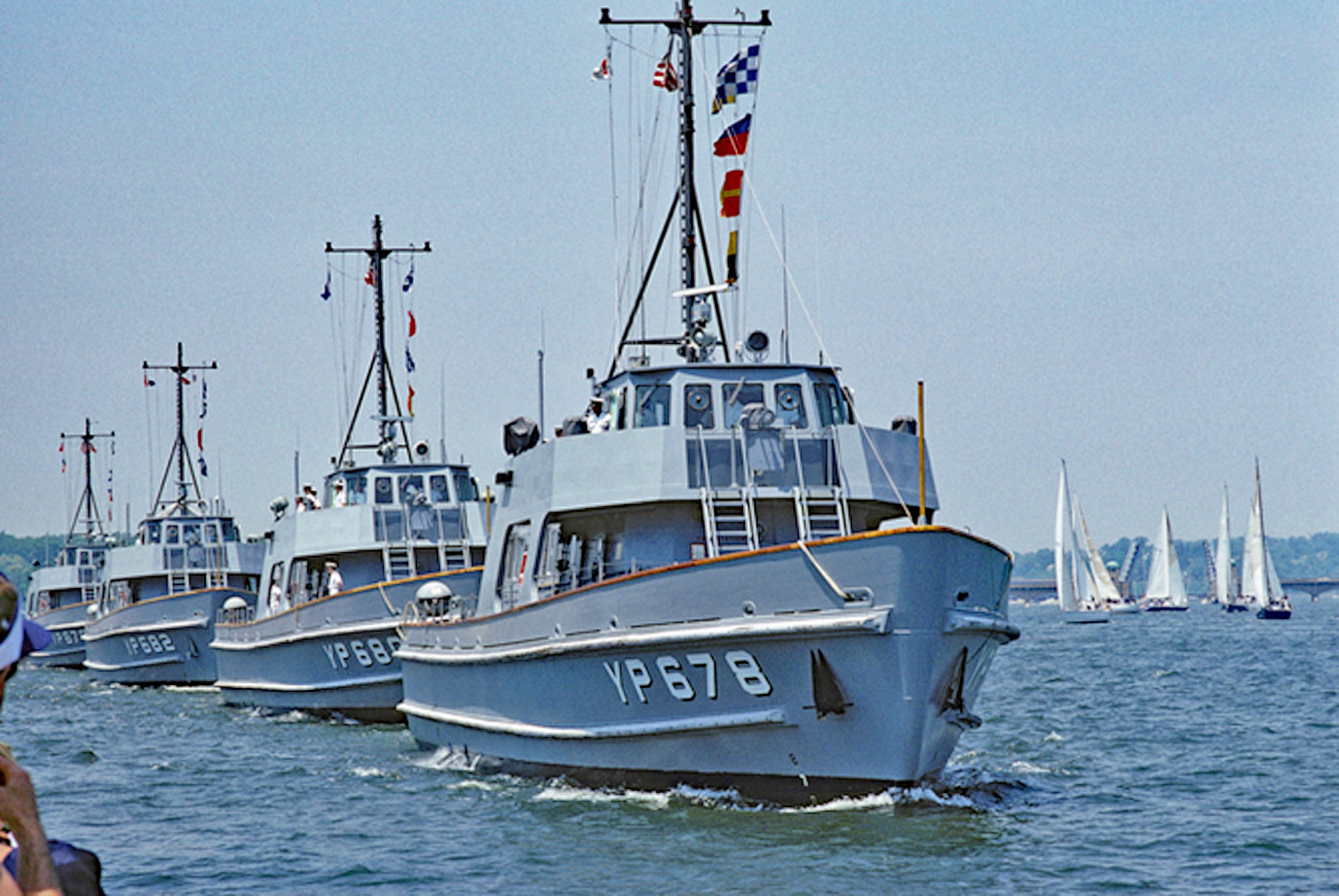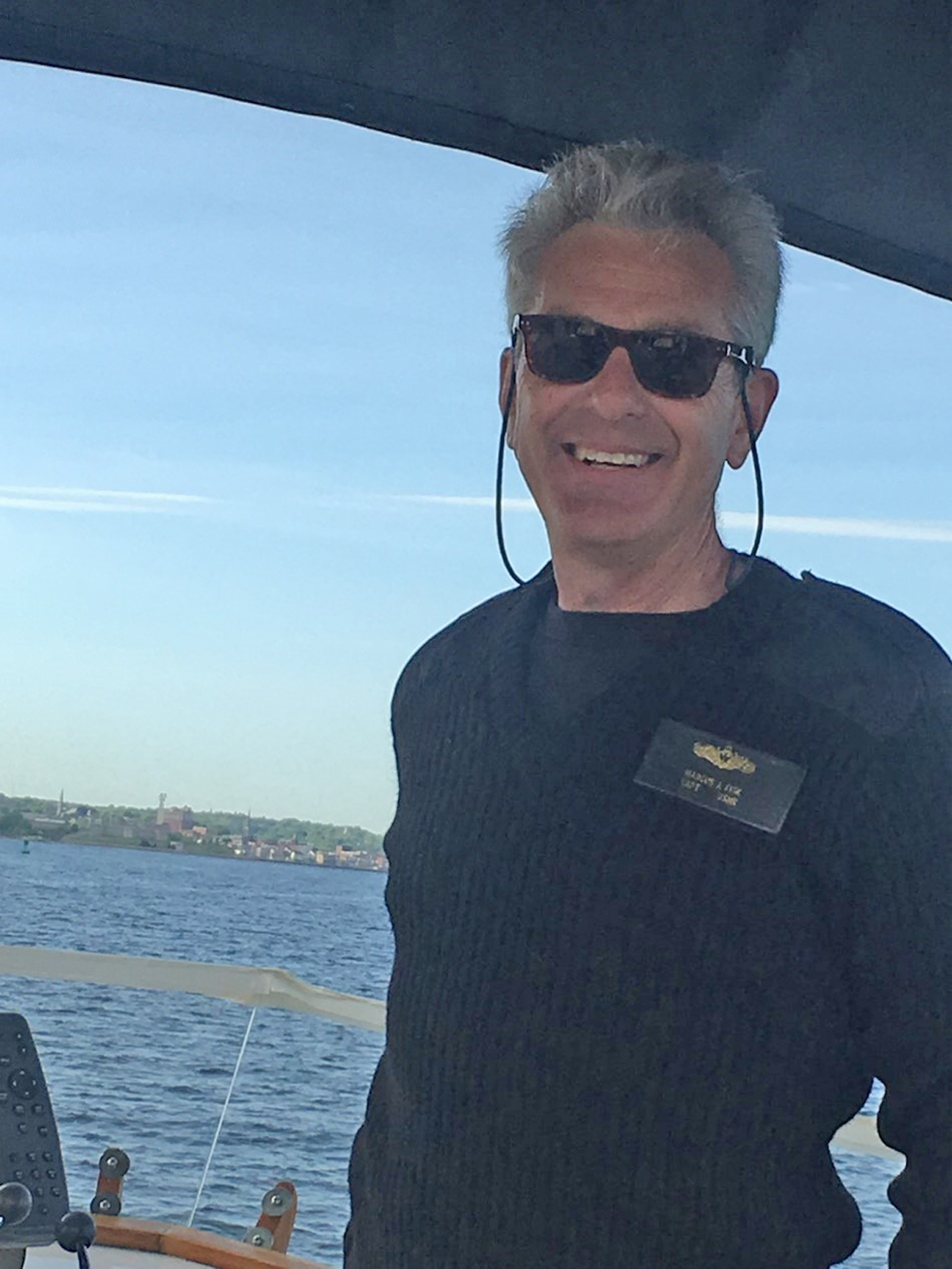The Last Word – A Farewell

Alexandria, VA – “A ship is always referred to as ‘she’ because
it costs so much to keep one in paint and powder.”
Fleet Admiral Chester W. Nimitz,
New York Times 24 May 1959
This is the height of the “boating season.” Usually, we would be pierside at Naval Station Newport, RI, sipping Dark ‘n Stormys during “Docktails” every evening, swapping sea stories with our neighbors, and looking for tips on when to get to Martha’s Vineyard to snag a good slip or a mooring.
That would be followed by a dinghy ride into downtown Newport for dinner and a chance to rub elbows with other boaters at the bar, some who just blew into town on one of those 200’ Italian-designed monsters moored at Goat Island before they zoom off to watch the polo matches. Others will be retired Navy folks enjoying the camaraderie with other retired Navy folks or weather-beaten old salts who first went to sea as a boat bum in the Bahamas after college.
Also dotting the bar-scape will be nubile co-eds hoping to meet a Leonardo di Caprio[1] and those bronzed Housewives of Newport cougars dishing the dirt about Newport’s movers and shakers gone astray, whose husbands are out golfing and cutting hedge-fund deals as the sun sets.

The boating world is a cross-section of humanity, and the differences between those who occupy each end of the social and economic strata are moot. Why? Because the sea is the great leveler. It doesn’t matter if the man standing next to you is wearing a Brooks Brothers light blue and white striped sport coat and sipping a Glenfiddich single-malt scotch or a windbreaker with grease and paint spots on it chugging a pint of Whaler’s Rise – they are sharing tales that only those who have been at sea can relate to – be it a 180 ft Benetti or a 26 ft. Yawl.
Riding your boat in 8-foot seas, dodging lobster or crab pot buoys, maneuvering out of the way of Toyota super-tankers, groping your way down Long Island Sound in pea-soup fog, or recovering a ballcap with sentimental value – all of these are the great equalizers. And it’s these stories that provide the common bond of camaraderie at the waterfront.
We had planned on taking our beautiful 42 ft. Grand Banks trawler ADAGIO from Newport down to the Chesapeake Bay last year. It was to be an exciting opportunity for my First Mate Pamela to reunite with her old metro D.C. friends, and a sentimental one for me – a chance to relive the excitement of the transit that I made years ago with the Naval Academy Yard Patrol boats as an Officer-in-Charge. [2]
That trip was Annapolis – New York – Newport – Boston – Annapolis. It was a terrific experience for voyage planning, navigation, seamanship, tactics, radio and flag communication, weather prediction, and a thorough baptism in shiphandling. I made that trip four times in two summers, so I was in boater’s heaven making voyage preparations to relive that experience with my bride.
Pamela and I loved Annapolis, and I was salivating to make the trip. Down Long Island Sound, transiting the East River and catching the perfect time to maneuver through Hell Gate with its dangerous 8-knot currents and menacing rocks that have eaten many a craft, rocking mercilessly along the New Jersey shore, dodging massive freighters in the Delaware River, and then enjoying the leisurely transit of the C&D Canal. Finally, there would be the excitement of pulling into Annapolis harbor and mooring along Ego Alley, inviting classmates and friends to ADAGIO for docktails and even more sea stories of our misspent Midshipmen youth.


When we made the decision to move to France, we put the trip on hold, thinking that we would spend a chunk of our summers on ADAGIO and probably make the trip to Annapolis in 2022. As the old saying goes however, “time, tide, and formation wait for no man,” and our boating plans changed. For purely practical reasons, we left ADAGIO in Mystic, Connecticut, where she winters on the hard, and I researched moving her to Europe permanently. But after much digging into the logistics and legalities of moving a U.S. boat permanently to the European Union, I hit a brick wall, or ran aground for you mariners out there.
Moving a U.S. flagged/registered boat to Europe seems to require several certifications due to age and type of boat. That effort costs $$$. In 2017, due to “new” U.S. tariffs levied on European goods, the European Union imposed a Value-Added Tax (or VAT) on boats up to 40% of the sale price of the boat coming into the E.U. Add to that the cost of a pier or slip for a season, European Insurance[3], lay-up costs for the off-season (or drydock for you landlubbers out there), and property tax – well, let’s just say that by the time I added it all up, I would have essentially bought my boat all over again.
Then, even if we had overcome all these obstacles, we found out by visiting and emailing numerous marinas all through the Mediterranean that the America’s Cup race is coming to Europe in 2024, and the Bethlehem excuse applied – there are no rooms at the Inn — no slips are available unless you buy one or rent one at rates that would make Elon Muck blanche.
So, we flew back to the States in May and spent three weeks doing our regular maintenance for commissioning, fixing anything that didn’t work or needed adjusting, and thoroughly cleaning from the flybridge down into the bilges. Carl Jensen, one of my stalwart Naval Academy classmates, drove down from his retirement home in Pennsylvania to help me sand and put a new coat of anti-fouling paint on the hull. When we finished, she looked her proverbial best, all ship-shape Bristol fashion, ready for launch and to conduct sea trials. Instead, she remained on her stands, on the hard, while Mickey, our boat broker, walked her and prepared her for sale.
The last time I walked her teak decks in May, I wandered up to my favorite spot – the flybridge. There’s a commanding view from up there and I’ve spent many wonderful, sometimes harrowing, hours at her helm. There is a helm down below in the salon, but the flybridge is where I loved to stand, hand on the wheel, glancing at my charts, and listening to the flapping on the Bimini and the slap, slap, slap of the waves as she rolled, pitched, and yawed along the New England shoreline. Birds would sometimes join me there, swaying just above the wave tops or diving to grab a delight from the gray-blue swells. The wind playing with my hair and an occasional burst of sea spray across my sunglasses, and then the sun would break through again, drying the salt spray and dancing on the surface of the sea.
I didn’t have to be at sea to feel all this. It was all there in my mind’s eye – a living slice of life that only some truly experience. Sure, a day at the shore or a trip on a friend’s boat in a huge lake with a Koozie in hand are great fun. But to be out at sea with no sight of land, feeling the rhythm of the waves and seeing the majesty of a starlit sky devoid of any man-made lights, yet waiting to catch the welcome glimpse of a lighthouse to secure your way back to port – there is nothing on earth closer to divinity than that.
I finished walking ADAGIO’s deck and descended the ladder. When I finally reached the car, I stopped and looked back one last time. A slight, almost wispy breeze blew, and I felt a tear on my cheek that had escaped. ADAGIO had just told me that I was underway again.
I’m a sailor. Please forgive my blasphemy.
[1] Surely his market segment.
[2] Officer-in-Charge is a misnomer. I was along for safety and mentoring seamanship to Midshipmen. The most important job however, was proper adult supervision for a flock of high-energy, super-achieving, hormone-infused young men and women destined to be officers in the Navy and the Marine Corps.
[3] They don’t accept any U.S. insurance regardless if it’s international or not.
ICYMI: Alexandria Archaeology Museum Launches New Permanent Exhibit About Lee Street




